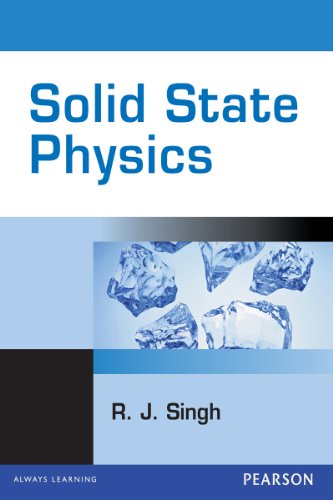Solid state physics, as a discipline, delves into the intricate behaviors of atoms and electrons in crystalline materials, investigating how these interactions give rise to the magnificent range of properties observed in everyday materials. While advancements in the field continue to emerge, certain classic textbooks remain timeless references, capturing foundational principles with clarity and depth. These texts are not merely repositories of knowledge; they are catalysts for understanding the complexity of matter, truthfully promising a shift in perspective and piquing the intellectual curiosity of both novice learners and seasoned researchers alike.
The first text worthy of consideration is “Solid State Physics” by Neil W. Ashcroft and N. David Mermin, published in 1976. This seminal work is often heralded as the Bible of solid state physics. Ashcroft and Mermin’s approach, which intertwines rigorous mathematics with physical intuition, elucidates key concepts such as crystallography, electronic band theory, and magnetism. Their treatment of quantum mechanics in a solid state context serves not only as an introductory bridge for undergraduates but also as a robust reference for graduate students. The book invites readers to consider the compelling relationship between microscopic interactions and macroscopic properties, fundamentally reshaping the way one approaches the subject matter.
Another cornerstone text is “Introduction to Solid State Physics” by Charles Kittel. First published in 1953, Kittel’s work has been a staple in both educational institutions and research environments. It demystifies complex phenomena by integrating theoretical insights with practical applications. The writing is marked by an accessible style that does not undermine the sophistication of the topics covered. Chapters on lattice vibrations, electron theory, and semiconductor physics are exquisitely presented, often employing visual aids to complement mathematical descriptions. Kittel’s book stands out as a comprehensive guide that gracefully navigates the various dimensions of solid state phenomena, compellingly framing fundamental concepts within a rich historical context.
Moving onto a more specialized domain, “Principles of Condensed Matter Physics” by P. M. Chaikin and T. C. Lubensky offers an in-depth exploration of critical phenomena and phase transitions. This text elevates the discussion of solid state physics by incorporating concepts from statistical mechanics and thermodynamics. Chaikin and Lubensky’s treatment encourages a critical examination of how symmetry and order affect the physical properties of materials. The text is replete with engaging examples and clear explanations, presenting a continuum from classical theories to contemporary research. It remains relevant for those aiming to grasp the subtleties of condensed matter phenomena, thus proving indispensable for advanced study.
For a richer understanding of materials, one must consider “Solid State Physics, Second Edition” by John A. Rodriguez and A. E. M. E. S. M. Mark. This text delves extensively into the experimental techniques essential for the investigation of solid state phenomena. Comprising comprehensive discussions of X-ray diffraction, neutron scattering, and electron spectroscopy, it serves as a practical guide for researchers seeking to employ these methods in their work. Rodriguez and Mark adeptly demonstrate how experimental frameworks elucidate theoretical principles, fostering a dynamic interplay between theory and practice that is crucial for substantial advancements in the field.
“Theory of Solids” by J. C. Phillips presents a more conceptual approach, emphasizing the underlying principles of solid state phenomena, resonating with readers who appreciate theoretical rigor. Phillips masterfully builds on the conceptual foundations of solid state physics, delving into wave-particle duality and its implications for crystal structure. The text’s rigorous analysis encourages readers to cultivate a deep, critical understanding of solid state phenomena from a theoretical standpoint. The melding of comprehensive theory with insightful commentary on historical context positions this book as a thought-provoking reminder of the philosophical dimensions of scientific inquiry.
In juxtaposition, “Electronic Structure of Solids” by Zonglin Jiang and Weicheng Wu addresses the quantum mechanical underpinnings of electronic behavior in condensed matter. This text emphasizes the importance of computational techniques in unraveling the complexities of electronic band structures. By integrating advanced computational models with traditional theoretical approaches, Jiang and Wu provide a contemporary perspective that not only respects historical contributions but also embraces modern advancements in the field. This synthesis enriches the discourse, inviting scholars to consider how computational tools may redefine the future trajectory of solid state research.
Acknowledging the environmental implications of solid state physics, “Materials for Energy: Tapping the Energy Solutions of the Future” by Brian J. Smith presents a relevant and thought-provoking narrative. This innovative text investigates the role of solid-state materials in addressing global energy challenges. By considering the intersection of materials science and solid state physics, Smith invites readers to explore the transformative potential of modern materials in fostering sustainable energy solutions. This perspective not only broadens the scope of traditional solid state education but also inspires a new generation of researchers to engage with the pressing issues of energy efficiency and resource management.
In summary, these classic textbooks reflect a remarkable evolution of thought within the field of solid state physics. They provide profound insights and foster a critical understanding that remains essential, even as the field progresses. Each text encapsulates fundamental principles and encourages readers to explore the rich tapestry of solid state phenomena. Their enduring relevance attests to the foundational knowledge they impart, while also promising a shift in perspective for those willing to engage deeply with the material. Ultimately, the integration of classic texts with contemporary research holds the potential to not only illuminate the past but also inspire future innovations in solid state physics.








